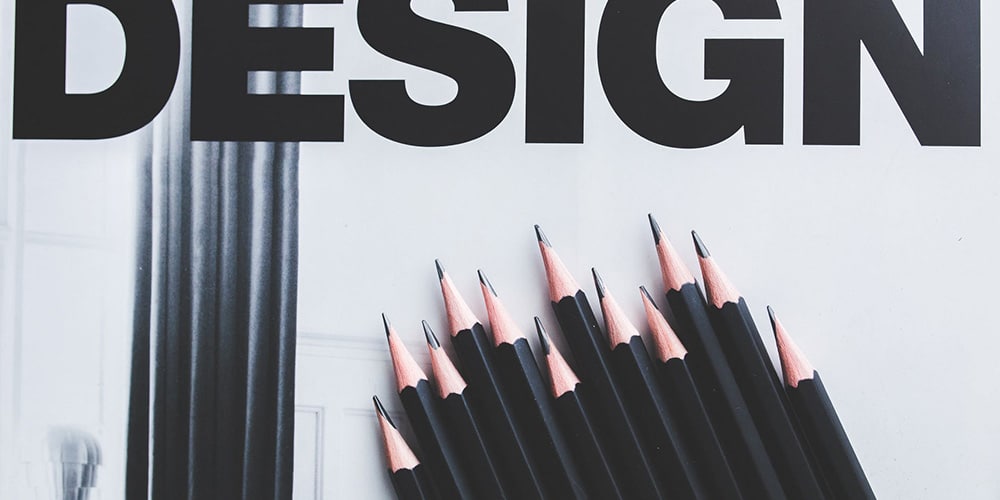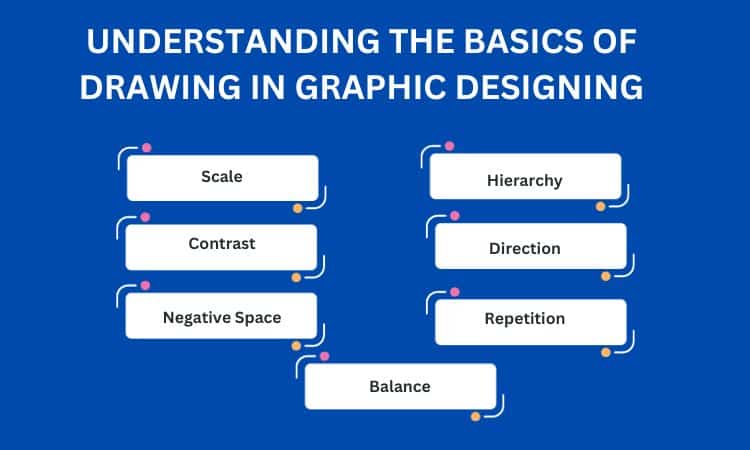
The Importance of Drawing in Graphic Designing
Most people think of Graphic design as flashy apps, advanced software, and highly tech-savvy people. But that’s half of the whole truth. Yes, the high usage of software tools and their recommendations in Graphic Design Course is true but until you are a true artist, you can’t create something worth praising.
Understanding the basics of drawing or at least having an essence of visual creativity is important for a true graphic designer or he/she will only continue to copy the ideas of other designers and never become the very best of their art.
Sounds like some old-school stuff? Yes, it truly is. But is this still relevant? Again, yes, it is. In this article, we’re going to explore the reasons behind this. So read the piece completely to acknowledge the importance of hand drawing in Graphic design.
The Role of Drawing in Graphics Designing:
Drawing is the base of all design works. It is the fundamental on which the whole graphic industry relies. So if you master or understand the principles of drawing, you are on Pandora’s chest. You can create your imagination on paper and show it to others as well.
Drawing helps you to be grounded as well as create stunning artwork with imagination. Some of them even break the norms but bring unexpected results at times.
Having an old-school book is a good idea as it helps you to be natural at most. Though the art industry is also getting enhanced with technology, the idea behind digital art is always natural to the maximum extent. That’s what most designers and companies look for natural artwork.
As we all know, technology is evolving rapidly. Graphics Design software today comes with hundreds of templates. You can use these to create stunning images and videos as well. But what are they in reality? They are ideas from the true creative people. They knew how drawing principles work. They used them and sometimes broke them to create these templates.
The maths & science of drawing is important to each designer. Understanding the right colours, geometry, figures & shapes can help you in creating innovative designs and adding artistic essence to your creative pieces.
Technical Benefits of Drawing in Graphics Design:
Though we put people to learn drawing to become good graphic designers from their core, let me be clear that you need the core principles of drawing and an intermediate level of skills of the hand to make it work. The whole idea of drawing in Graphic designing is to give you a cornerstone in creating and exploring new ideas for your marketing projects.
Graphic Design uses drawing in the following ways.
1. Creating Layouts for Designs:
When creating a new design, you must feel the design in bits & pieces. It is your imagination that mixes all the pieces well & creates the final designs. This becomes necessary when the idea is not pre-decided or you have full freedom to create anything on the screen.
While this is not mandatory for all creatures, it helps when you’re dealing with a lot of elements. Also, it helps in offering the beta options to clients before creating the main product.
2. Designing the Ideas of Logo:
When you’re into logo designing, sketching is highly helpful. Use a pen & paper and design your inner ideas roughly. There will be mistakes but who cares, these are just pencil sketches. Start with the company name, initials, theme, and their nature of work ethics. Visually showing their mission & vision can also help you visualise the idea.
You will come up with lots of designs while combining shapes, figures, & manipulation of the ideas and some of them will be complex. But as they are not created in software, the game is in your hands only. This way you can easily create a bundle of unique designs & ask for a review from your client.
Understanding the Basics of Drawing in Graphic Designing:
Core drawing principles are the base of Graphic design. These are the creative fundamentals that offer you a base for every creative outline. These basics are from the old books of drawing and play with a lot of psychological games too. Here are some of the art techniques that you must use to create stunning art pieces.

1. Scale:
Scaling helps you to design the elements and create emphasis on them. This is the relative size of your main subject in comparison to the other elements of the design. It helps the audience to focus on what you want.
2. Hierarchy:
The hierarchy of design helps your audience to find the importance of each element present according to their roles. It comprises many elements such as size, color, contrast, alignment, repetition, and brightness.
3. Contrast:
The contrast technique helps in popping up the selective design elements. Also, contrast helps in distinguishing different elements. Light vs. dark, Thin vs. thick- contrast plays a vital role in giving weightage to the element.
4. Direction:
Direction works as a pathway for the audience. The ‘X’, ‘Y’, and ‘Z’ shape direction creates an illusion of movement within the design. It lets the audience know each element one by one.
5. Negative Space:
Your design needs to breathe as well. Negative space is the fundamental law of drawing where you need to leave space between elements to keep the design breathable.
6. Repetition:
Repeating an element, design, patterns, fonts, images, textures, and more gives consistency to the design and a focused element or theme.
7. Balance:
Drawing asks you to create pieces in symmetry. This technique helps to create a perfect balance, sharing soothing effects among the audience. On the contrary, if you want to showcase tension, asymmetry is the key.
Drawing & Digital Tools in Graphic Design:
Below is a list of tools Graphics Design Course in Bangalore suggests to learn. Note that these tools are used by the world’s professionals and highly regarded in the current Graphic marketplace.
- Photoshop
- Sketch
- Illustrator
- InDesign
- After Effects
The Future of Drawing in Graphics Designing:
The sketching is going to stay for a long time now. The demand for handmade creative pieces is going to rise but such is not the case in Graphic Designing. The tools & smart devices are transforming the art segment. Now there will be no smudging or rough work on paper. You can draw anything & everything with any number of edits you want. Creating files, drawing with tools that control your pencil effects & colours, and sending them to your clients are going to be easier. But the fundamentals will still be there for you and the revolutionising industry.
Conclusion:
Drawing, though seems like old school homework, is still relevant to the art industry. It is an essential part of Graphics Design and going to stay for a longer time to come. Technologies are flourishing and designers are emerging all over the world. But I can’t say how many of them are going to rock the stage. But if that is the case, learning Graphic Design at its core is drawing.
FAQs:
Ques: Why is Drawing Important in Graphic Design?
Ans: Drawing gives your art a strong base. It frees your creativity from the bondages of rules & techniques, giving you the best of creativity.
Ques: Can I become a graphic designer without strong drawing skills?
Ans: Yes. You can. However, the basics of drawing are essential to study and adapt to Graphic design.
Ques: How can drawing enhance creativity in design?
Ans: Drawing is one of the oldest art. When you use its fundamental practices, it automatically equips your designs with creativity. Drawing allows you to materialize your ideas that are in bits & pieces and make a stunning art piece.
Ques: What are some recommended drawing exercises for graphic designers?
Ans:- Positive/Negative
– Motif & Evolution.
– Rough Traces
– Icon Studies
– Nonpictorial Narratives
– Stylization
Ques: Are digital drawing tablets necessary for graphic designers?
Ans: No. However, they do enhance your creativity instantly.



